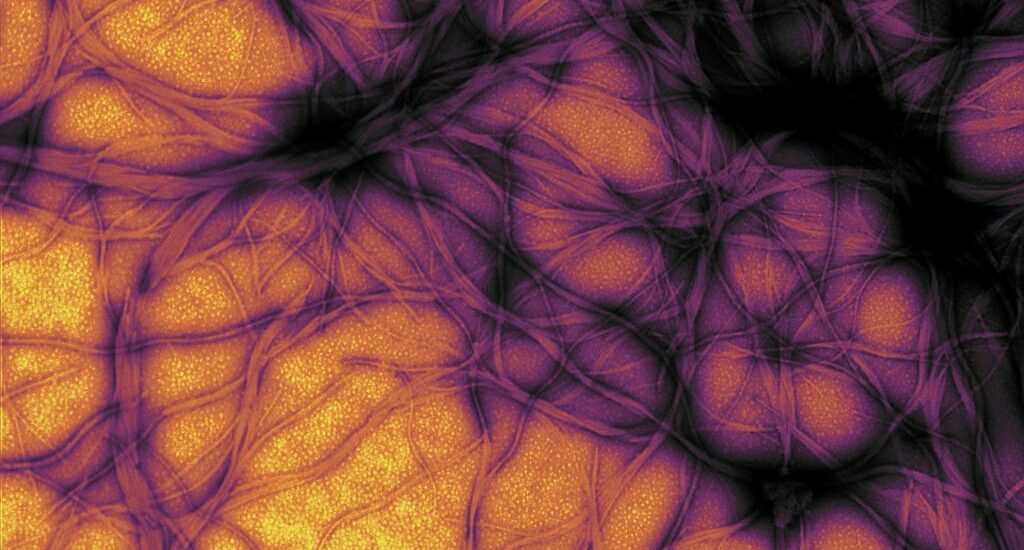Towards Understanding the Relationship Between ER Stress and Unfolded Protein Response in Amyotrophic Lateral Sclerosis
By Chenxuan Zhao, Yong Liao, Abdul Rahaman, and Vijay Kumar Excerpt from the article published in Frontiers in Aging Neuroscience, 15 June 2022, DOI: https://doi.org/10.3389/fnagi.2022.892518 Editor Highlights Protein misfolding and aggregation in cells trigger the ER stress which is overpowered by an adaptive response of cells collectively known as unfolded protein response (UPR). Endoplasmic reticulum […]
Continue ReadingTargeting ER-Mitochondria Signaling as a Therapeutic Target for Frontotemporal Dementia and Related Amyotrophic Lateral Sclerosis
By Sandra M. Martín-Guerrero, Andrea Markovinovic, Gábor M. Mórotz, Shaakir Salam, Wendy Noble and Christopher C. J. Miller Excerpt from the article published in Frontiers in Cell and Developmental Biology, volume 10, 27 May 2022 DOI: https://doi.org/10.3389/fcell.2022.915931 Editor’s Highlights Endoplasmic reticulum (ER) and mitochondria signaling is damaged in Frontotemporal dementia (FTD) and amyotrophic lateral sclerosis (ALS) […]
Continue ReadingNovel reporters of mitochondria-associated membranes (MAM), MAMtrackers, demonstrate MAM disruption as a common pathological feature in amyotrophic lateral sclerosis
By Shohei Sakai, Seiji Watanabe, Okiru Komine, Akira Sobue, and Koji Yamanaka Excerpt from the article published in The FASEB Journal. 2021; 35:e21688. pPublished: 18 June 2021, DOI: https://doi.org/10.1096/fj.202100137R Editor’s Highlights Aberrant regulation of MAM is associated with various neurological diseases, including amyotrophic lateral sclerosis (ALS), a fatal neurodegenerative disease that selectively affects motor neurons. MAM disruption is […]
Continue ReadingWildtype σ1 receptor and the receptor agonist improve ALS-associated mutation-induced insolubility and toxicity
By Yasuharu Shinoda, Yudai Haga, Koichiro Akagawa, and Kohji Fukunaga Excerpt from the article published in Journal of Biological Chemistry . 2020 Dec 18;295(51):17573-17587. PMID: 33453999; PMCID: PMC7762949. DOI: 10.1074/jbc.RA120.015012 Editor’s Highlights Genetic mutations related to ALS, a progressive neurological disease, have been discovered in the gene encoding σ-1 receptor (σ1R). σ1R localizes preferentially to the […]
Continue ReadingSigma-1 receptor chaperones rescue nucleocytoplasmic transport deficit seen in cellular and Drosophila ALS/FTD models
By Pin-Tse Lee, Jean-Charles Liévens, Shao-Ming Wang, Jian-Ying Chuang, Bilal Khalil, Hsiang-en Wu, Wen-Chang Chang, Tangui Maurice, and Tsung-Ping Su Excerpt from the article published in Nature Communications 11, 5580 (2020). https://doi.org/10.1038/s41467-020-19396-3 Editor’s Highlights Amyotrophic lateral sclerosis (ALS) or frontotemporal dementia (FTD), either sporadic or familial, share a (G4C2)-RNA hexanucleotide repeat expansion (HRE) upstream of […]
Continue ReadingAmyotrophic Lateral Sclerosis: Proteins, Proteostasis, Prions, and Promises
By Luke McAlary, Yee Lian Chew, Jeremy Stephen Lum, Nicholas John Geraghty, Justin John Yerbury, and Neil R. Cashman Excerpt from the article published in Frontiers in Cellular Neuroscience, volume 14, 2020, DOI: https://doi.org/10.3389/fncel.2020.581907 Editor’s Highlights The disease mechanisms of Amyotrophic lateral sclerosis (ALS) strongly implicates a pathological role for both declining proteostasis and prion-like […]
Continue ReadingThe ALS-Related σ1R E102Q Mutant Eludes Ligand Control and Exhibits Anomalous Response to Calcium
By María Rodríguez-Muñoz, Elsa Cortés-Montero, Javier Garzón-Niño, and Pilar Sánchez-Blázquez Excerpt from the article published in International Journal of Molecular Sciences, 2020, 21, no. 19: 7339. https://doi.org/10.3390/ijms21197339 Editor’s Highlights Mutations in human SIGMAR1 are associated with motor neuron diseases such as autosomal recessive distal hereditary motor neuropathy and juvenile amyotrophic lateral sclerosis (ALS). A single missense […]
Continue ReadingProteostasis Failure in Neurodegenerative Diseases: Focus on Oxidative Stress
By Annika Höhn, Antonella Tramutola, and Roberta Cascella Excerpt from the article published in OMCL Oxidative Medicine and Cellular Longevity 1942-0994 1942-0900 Hindawi Volume 2020 Article ID 5497046 DOI: https://doi.org/10.1155/2020/5497046 Editor’s Highlights The cellular protein quality control ensures the proper folding of newly synthesized proteins, handling unfolding, refolding, and/or degradation of misfolded proteins. This process is critical as 30% of newly synthesized proteins are prone […]
Continue ReadingSigma-1 receptor is a key genetic modulator in amyotrophic lateral sclerosis
By Simon Couly, Bilal Khalil, Véronique Viguier, Julien Roussel, Tangui Maurice, and Jean-Charles Liévens Excerpt from the article published in Human Molecular Genetics, Volume 29, Issue 4, 15 February 2020, Pages 529–540, https://doi.org/10.1093/hmg/ddz267 Editor’s Highlights The Sigma-1 receptor (S1R) is a transmembrane protein mostly located in the endoplasmic reticulum (ER), that presents a main bulk in […]
Continue ReadingThe Glu102 mutation disrupts higher-order oligomerization of the sigma 1 receptor
By Ara M. Abramyan, Hideaki Yano, Min Xu, Leanne Liu, Sett Naing, Andrew D. Fant, and Lei Shi Excerpt from the article published in Computational and Structural Biotechnology Journal, Volume 18, 2020, Pages 199-206, ISSN 2001-0370, DOI: https://doi.org/10.1016/j.csbj.2019.12.012. Editor’s Highlights The E102Q mutation of σ1R has been found to elicit familial cases of amyotrophic lateral […]
Continue Reading









